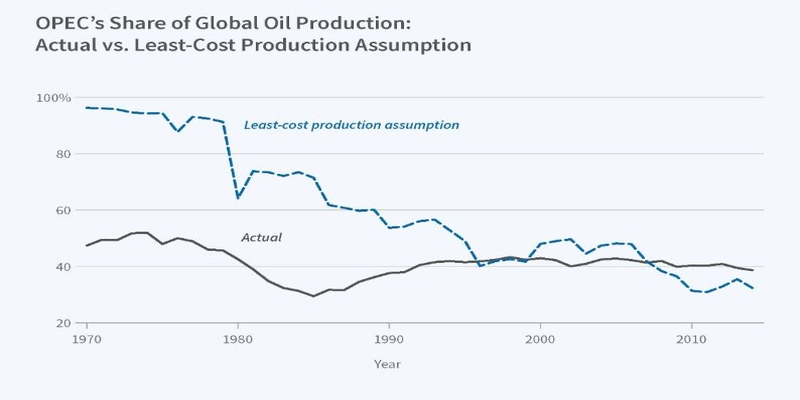Comprehensive Guidance of Stock Market | Law of Supply & Demand
Demand and supply is a profitable model that offers the foundation for consumer profit. The cost of products or given supply depends on a push and pull strategy as both react to such market forces. When demand for things is high, the price will automatically increase; when the demand is low, the price ultimately drops.
Producers and consumers are busy with pull and push dynamics and respond with these two market preferences. Every good that reaches the market is influenced by the law of demand &'' supply. Here is comprehensive knowledge about how does the law of supply and demand affects the stock market?
Impacts Of Law Of Demand &'' Supply
The law of demand &'' supply has specific changes for some aspects of our regular life. Some of them are discussed below:
Pricing &'' Market Efficiency
Many firms use this rule to determine the best cost for their selling. They search for what people need and how much they are willing to pay and adjust the cost according to the people's perspective.
Generally, this rule ensures that markets work well by dividing resources based on what consumers like. When the finances of the available items match what people want to buy at a fair cost, everything runs smoothly, and it is good for the economy overall.
Government Regulations

Usually, the government steps in to control the cost of stuff or the cost of being sold to ensure people are treated properly, and businesses compete fairly. Knowing how supply &'' demand work helps policymakers make smart selections when they create regulations and rules.
Investment Decisions
Investors explore supply &'' demand to search for excellent investment possibilities. Based on that guide, they check out what is happening in the market to find out how things might change and then decide where to put their assets.
The Law Of Supply
The law of supply is about how organizations make and sell goods in the stock market. Suppose a company makes the latest product and it becomes more popular. Now, it is the firm's job to make enough of that product to meet the demand of people.
Usually, they might even decide to raise the cost because everyone wants it so much. If an organization is a single seller with unique things, they have more control over the market. They can select how much to make and at what cost to sell so that people keep purchasing without losing interest.
However, if goods are not exclusive and many other firms begin making their own versions, it could be problematic. Similar products drowning the market might make people less interested, and the demand could drop. It's a risky thing when something famous gets copied too much.
The Law Of Demand
What is demand in the stock market? So, the law of demand is resolved by the capability of a how does the law of supply and demand affect a consumer? To create necessities or discretionary products, everyone is willing to explore cheaper products, and if you know about goods, then it is not going to be as good but cost less, so it is all about how our ability to purchase goods affects what and how much we purchase, especially when cost changes.
The cost of discretionary finance for a consumer has a huge driver of expectations, but some other possibilities also affect the curve of demand. They add effective marketing properties, price, confidence of consumers, perception of quality, etc.
How Do Supply &'' Demand Influence Business Owners?
What happens to demand when price increases? Owners of businesses may use demand &'' supply to support them with goods development, customer care engagement, and launch a business to build customer satisfaction and feel heard.
It may be used to maintain the cost of goods after an authentic cost is factored in. Here are some basic ways that you can make laws that serve business requirements and purposes.
Set A Steady Inventory

If you want to sell some products and have customers who need to buy your product, The curve of customer demand may support the inventory that you are going to require during peak seasons and overall for the rest of the year.
Customers find out that you are a reliable seller and then come back to you for sales because they have knowledge that you are going to have goods in stock.
Stay With The Competition
Every customer is fickle at times. They need their products, and they are not going to stand by if there is a competitor who has better things in the stock market. Predict the demand for the good to support you in setting sufficient inventory during downsizing lost sales.
Avoid Having Excessive Or Insufficient Inventory
Selling products can be difficult because you do not need to have either too much or too short of it. If you have a huge amount, you might have to sell goods for less, and not a huge amount of people will buy.
On the other hand, if you do not have the proper amount of goods, then you might have to charge more, and then not many people will buy either. To figure out the correct amount to have, you can use a fancy chart which is called the supply &'' demand curve.
It helps you to understand how much people want products at different costs. In this way, you can make sure that you have enough to sell at the perfect price, so people keep buying without problems.
Helps You Set Your Pricing

Set your estimated cost of your product to be balanced and seasonal if you have some seasonal things to sell or others that experience fast demands annually. Suppose you sell a special part of a specific product on a product website. People buy from you regularly all year round, though there is always a big jump in sales during the holiday season.
Conclusion
The above post is all about how does the law of supply and demand affects the stock market. Stock marketing expands day by day, and understanding these core ideas allows you to create better commercial, financial decisions, investment, and personal financials.
Real-world examples allow you to demonstrate the law's practical implementation in different organizations.












